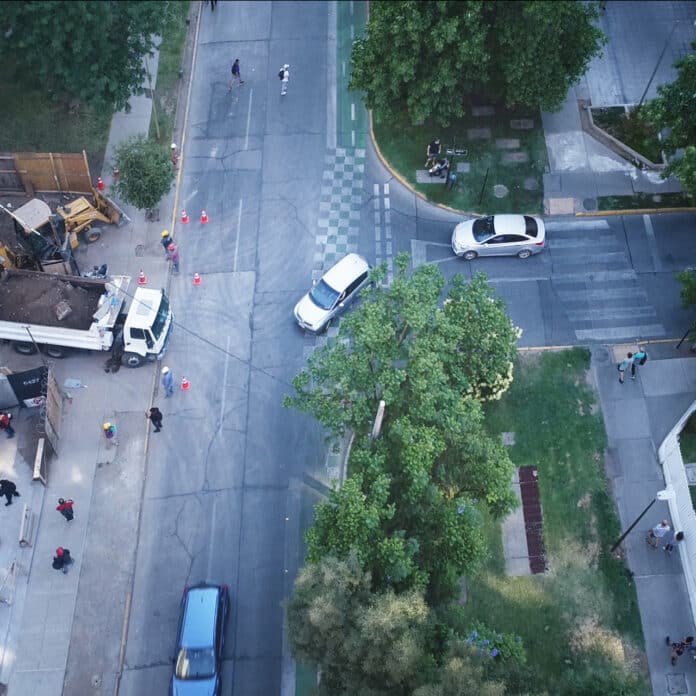Objective observation of pedestrian behavior on the street has traditionally been difficult due to the intensive commitment of time and resources to spatial analysis of pedestrian locations encountering additional problems. While there is walking for utilitarian purposes, there is also evidence of essential benefits in other street activities related to leisure and free time, such as children’s play, dog walking, jogging, or simply resting. Hence, a growing body of literature studies the relationship between the urban environment and people’s behavior on streets and in public spaces.
Recent advancements in technology have greatly enhanced the ability to collect data on pedestrian behavior through the use of Global Positioning Systems (GPS), WiFi signal detection sensors of smart devices, and computer vision. However, these technologies alone do not provide sufficient information on individuals’ specific activities and behaviors.
Recently, Unmanned Aerial Vehicles (UAVs) have gained popularity due to the significant improvements they offer over other conventional observation systems, such as their ability to cover larger surface areas in less time. A new study published in PLOS ONE tests the performance of UAV-based observation techniques in measuring pedestrian activity in two comparative settings in Santiago de Chile.
Scientists developed an alternative approach of systematic behavioral observation of daily activities in the street based on the use of a UAV. They adapted the data acquisition techniques of behavior mapping to be: (1) centered on the place, (2) based on on-site observations, detailing the necessary steps in the collection of the information in the place, in the subsequent acquisition of the data, and (3) coding the data in a Geographic Information System (GIS).
This study has shown that the reliability between two raters who reviewed the same videos acquired by the UAV is high, and this has been verified in previous studies. The method benefits from the recognized advantages of UAVs over conventional data collection techniques, such as the elevated position of the observation point, the constant speed of UAV flight, and the backup of data with the subsequent revision that the videos acquired on the flight allow.
Based on these attributes, the study shows that the use of UAVs allows us to expand the register of the volume of pedestrians with additional information that can improve our understanding of how streets are used, such as the specific activities of people and their interactions with objects, animals, or other people. These advantages are beneficial in using behavior mapping to understand spatial patterns or in the different geospatial analyses that the GIS allows, some of which have been exemplified in this study.
In addition, the analysis shows that by using UAVs, it is possible to simultaneously observe people on both sides of the street and even the activity that occurs on the road, which, together with the possibility of traveling at speed higher than that demanded by other techniques, can result in significant resource savings.
Finally, the proposed method allows observation based on momentary time sampling to be carried out with less time differences between the different parts that make up a study area, unlike other studies carried out on foot, where differences of several minutes or even hours often occur between the start and the end of the same observation route.
Journal Reference:
- Daniel Parra-Ovalle, Carme Miralles-Guasch et al. Pedestrian street behavior mapping using unmanned aerial vehicles. A case study in Santiago de Chile. PLoS ONE 18(3): e0282024. DOI: 10.1371/journal.pone.0282024
